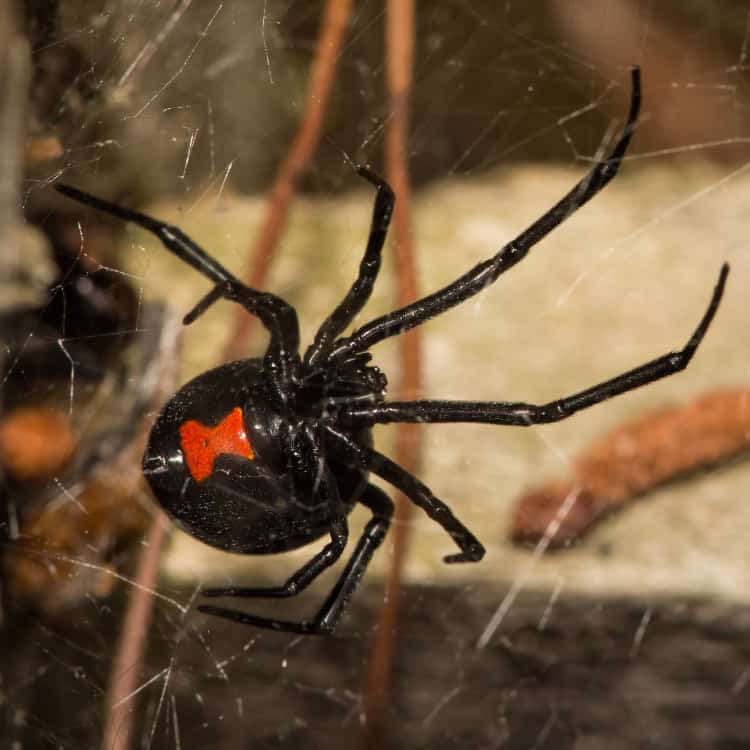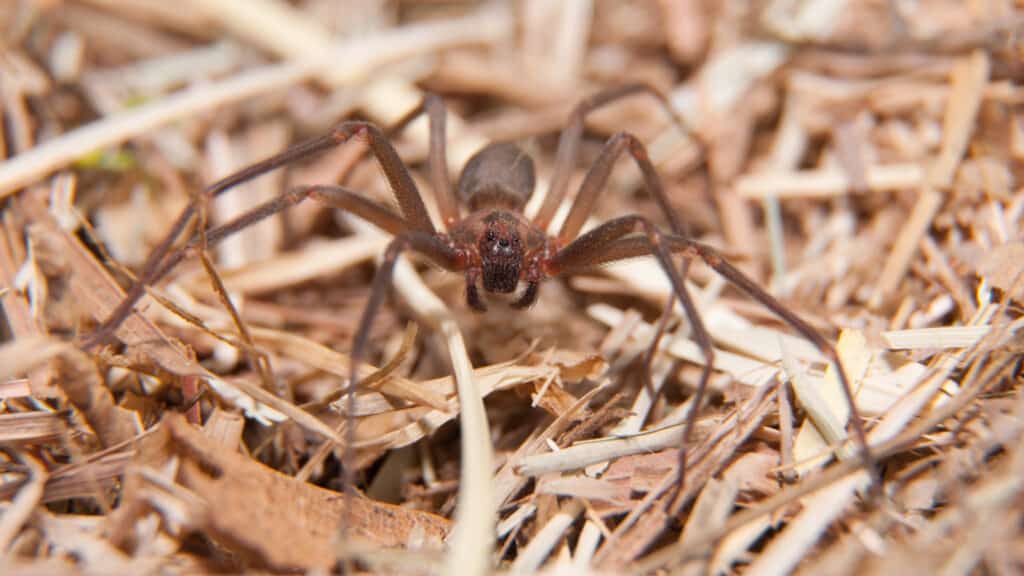If you are afraid of spiders, you might want to skip this article. We are going to talk about some of the most deadliest spiders in the world, and what makes them so dangerous to humans. Spiders are among the most diverse and successful animals on Earth, with more than 43,000 species living in almost every habitat. Most spiders are harmless to humans, but some have venom that can cause serious harm or even death. Here are some of the most deadly spiders you should avoid at all costs.
Funnel-web spiders (Atrax)
Funnel-web spiders are a group of spiders that belong to the family Hexathelidae. They are native to Australia and New Zealand, and they are known for their aggressive behavior and potent venom. Funnel-web spiders build funnel-shaped webs in moist and dark places, such as under rocks, logs, or in burrows. They use these webs to trap their prey, which include insects, frogs, lizards, and even small mammals.
The most dangerous species of funnel-web spiders is the Sydney funnel-web spider (Atrax robustus), which lives in the eastern coast of Australia. This spider has large fangs that can pierce through human skin and inject a neurotoxic venom that affects the nervous system. The venom can cause severe pain, muscle spasms, breathing difficulties, and cardiac arrest. Without antivenom treatment, the bite can be fatal within 15 minutes to an hour. The Sydney funnel-web spider is responsible for at least 13 human deaths since 1927.
Black widow and redback spiders (Latrodectus)
Black widow and redback spiders are members of the genus Latrodectus, which includes about 32 species of spiders that have a distinctive red or orange hourglass-shaped mark on their abdomen. They are found worldwide, but mostly in warm and temperate regions. They spin irregular webs in dark and sheltered places, such as under stones, woodpiles, or furniture. They feed on insects, spiders, and occasionally small vertebrates.

Black widow and redback spiders have a powerful venom that contains a neurotoxin called latrotoxin, which affects the release of neurotransmitters at the nerve endings. The venom can cause severe pain, muscle cramps, sweating, nausea, vomiting, and hypertension. In rare cases, the venom can also cause paralysis, respiratory failure, and death. Black widow and redback spiders are especially dangerous to young children, elderly people, and people with heart conditions. The black widow spider is responsible for about five human deaths per year in the United States, while the redback spider is responsible for about 14 human deaths since 1956 in Australia.
Banana and wandering spiders (Phoneutria)
Banana and wandering spiders are a group of spiders that belong to the genus Phoneutria, which means “murderess” in Greek. They are native to Central and South America, but they can also be accidentally transported to other countries by hiding in banana shipments. They are called wandering spiders because they do not build webs, but roam around at night in search of prey or mates. They are also called banana spiders because they are frequently found on banana leaves or plants.
Banana and wandering spiders have an aggressive defense posture, in which they raise their front legs straight up into the air. They have a potent venom that contains a neurotoxin called phTx3, which blocks sodium channels in nerve cells. The venom can cause intense pain, swelling, inflammation, blurred vision, dizziness, nausea, and in some cases, priapism (a painful and prolonged erection). The venom can also cause severe allergic reactions and anaphylactic shock. Banana spiders are aggressive and fast-moving, and they do not build webs. They wander around in search of prey, which includes insects, rodents, lizards, frogs, and sometimes birds. They are nocturnal and hide during the day in dark and moist places, such as under leaves, logs, or rocks. They can also be found in urban areas, such as inside houses, cars, or clothing.
Brown recluse spider (Loxosceles reclusa)
This spider is native to the southern and central United States, and is known for its violin-shaped marking on its cephalothorax (the front part of its body). It prefers dark and secluded places, such as attics, basements, closets, or woodpiles. Its bite is usually painless at first, but can develop into a necrotic ulcer that destroys the surrounding tissue. In rare cases, the venom can also cause systemic symptoms, such as fever, rash, nausea, or kidney failure. The best treatment for a brown recluse bite is to clean the wound, apply ice, elevate the limb, and seek medical attention as soon as possible.
Chinese bird spider (Haplopelma hainanum)
This spider is native to southern China and Vietnam, and belongs to the tarantula family. It is one of the largest spiders in the world, with a leg span of up to 20 cm (8 inches). It lives in burrows in the forest floor, and preys on insects, rodents, and small birds. Its bite can cause intense pain, swelling, muscle spasms, and difficulty breathing. There is no specific antivenom for this spider, so the treatment is supportive and symptomatic.
Overview
These are just some of the most dangerous spiders in the world. There are many other species that can cause harm or discomfort to humans, such as the redback spider (Latrodectus hasselti), the yellow sac spider (Cheiracanthium spp.), the wolf spider (Lycosa spp.), or the six-eyed sand spider (Sicarius spp.). However, it is important to remember that most spiders are not harmful to humans at all. In fact, spiders play an important role in nature by controlling insect populations and providing food for other animals.
Therefore, it is advisable to respect spiders and their habitats whenever possible. If you encounter a spider, do not panic or try to kill it. Instead, try to identify it and avoid contact with it. If you are bitten by a spider, do not squeeze or puncture the wound. Instead, wash the area with soap and water, apply a cold compress, and seek medical attention if necessary. By following these simple steps, you can reduce the risk of spider bites and enjoy the wonders of these amazing arachnids.




